Related Research Articles

Biennale, Italian for "biennial" or "every other year", is any event that happens every two years. It is most commonly used within the art world to describe large-scale international contemporary art exhibitions. As such the term was popularised by Venice Biennale, which was first held in 1895. Since the 1990s, the terms "biennale" and "biennial" have been interchangeably used in a more generic way - to signify a large-scale international survey show of contemporary art that recurs at regular intervals but not necessarily biannual. The phrase has also been used for other artistic events, such as the "Biennale de Paris", "Kochi-Muziris Biennale", Berlinale and Viennale.

The São Paulo Art Biennial was founded in 1951 and has been held every two years since. It is the second oldest art biennial in the world after the Venice Biennale, which serves as its role model.

Alfons Hug is a curator, critic and exhibition organizer.
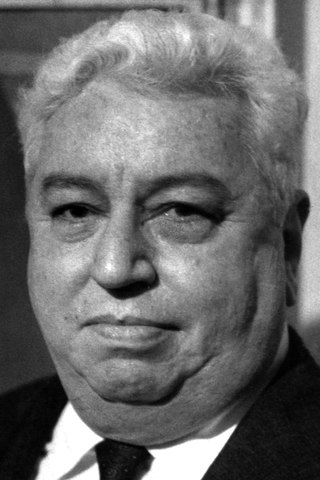
Emiliano Augusto Cavalcanti de Albuquerque Melo, known as Di Cavalcanti, was a Brazilian painter who sought to produce a form of Brazilian art free of any noticeable European influences. His wife was the painter Noêmia Mourão, who would be an inspiration in his works in the later 1930s.
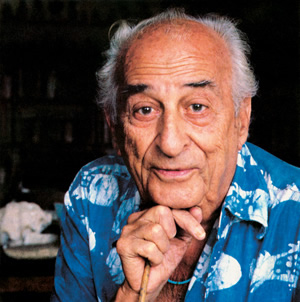
Héctor Julio Páride Bernabó was an Argentine-Brazilian artist, researcher, writer, historian and journalist. His nickname and artistic name, Carybé, a type of piranha, comes from his time in the scouts. He died of heart failure after the meeting of a candomblé community's lay board of directors, the Cruz Santa Opô Afonjá Society, of which he was a member.
Jorge Glusberg was an Argentine author, publisher, curator, professor, and conceptual artist.
Paul Ramírez Jonas is an American artist and arts educator, who is known for his social practice artworks exploring the potential between artist, audience, artwork and public. Many of Ramirez Jonas's projects use pre-existing texts, models, or materials to reenact or prompt actions.
The Vera List Center for Art and Politics is an American nonprofit research organization and public forum for art, culture, and politics, established in 1992. Vera List was an American art collector and philanthropist.

Winston Branch is a British artist originally from Saint Lucia, the sovereign island in the Caribbean Sea. He still has a home there, while maintaining a studio in California. Works by Branch are included in the collections of Tate Britain, the Legion of Honor De Young Museum in San Francisco, California, and the St Louis Museum of Art in Missouri. Branch was the recipient of a Guggenheim Fellowship in 1978, the British Prix de Rome, a DAAD Fellowship to Berlin, a sponsorship to Belize from the Organization of American States, and was Artist in Residence at Fisk University in Tennessee. He has been a professor of fine arts and has taught at several art institutions in London and in the US. He has also worked as a theatrical set designer with various theatre groups.
Alex Cerveny is a Brazilian artist, engraver, sculptor, illustrator and painter, born in São Paulo, Brazil, in 1963.
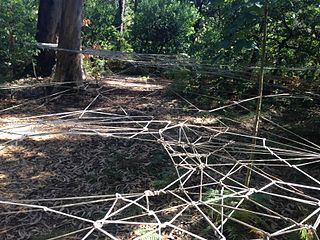
Fernanda Gomes is a Brazilian visual artist. She emerged as part of the generation of Rio de Janeiro-born artists that also include Beatriz Milhazes, Ernesto Neto and Adriana Varejão. With a career that began in the 1980s, her first solo exhibition took place in London in 1997.
Francisco Antonio Paulo Matarazzo Sobrinho, known as Ciccillo Matarazzo, was a Brazilian industrialist, founder of São Paulo Museum of Modern Art and São Paulo Art Biennial.
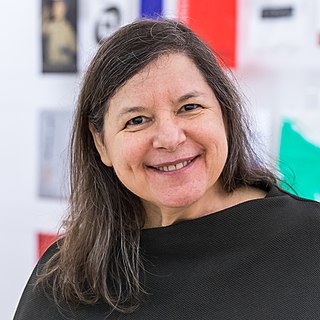
Jacqueline "Jac" Leirner, is a Brazilian artist. Leirner is best known for the sculptures and installations she creates from mundane objects and ephemera, including devalued bank notes, used envelopes, promotional tickets, empty packs of cigarettes and plastic shopping bags.
Gilvan Samico was a painter, teacher and Brazilian engraver of the Armorial Movement of graphic design.
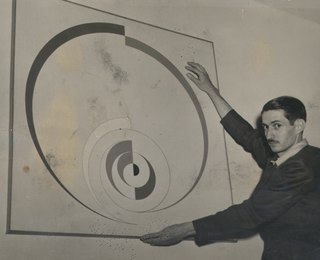
Ivan Ferreira Serpa was a Brazilian painter, draftsman, printmaker, designer, and educator active in the concrete art movement. Much of his work was in geometric abstractionism. He founded Grupo Frente, which included fellow artists Lygia Clark, Helio Oiticica, and Franz Weissmann, among others, and was known for mentoring many artists in Brazil.
Teresa Nicolao is a Brazilian artist, designer and film maker.
Sheila Maureen Bisilliat is an English-born Brazilian photographer.

Yolanda Léderer Mohalyi was a painter and designer who worked with woodcuts, mosaics, stained glass and murals as well as more usual materials. Her early work was figurative, but she increasingly moved towards abstract expressionism. With artists such as Waldemar da Costa and Cicero Dias, she opened the way for abstraction in Latin American art.

The Brazilian pavilion houses Brazil's national representation during the Venice Biennale arts festivals.
Jaider Esbell was a Brazilian writer, artist, art educator, curator, geographer, and indigenous rights activist.
References
- ↑ Checa-Gismero, Paloma (September 2017). "Realism in the Work of Maria Thereza Alves". Afterall: A Journal of Art, Context and Enquiry. 44: 52–63. doi:10.1086/695513. ISSN 1465-4253.
- 1 2 Yawitz, Adela (2018-06-18). "Curators Test Ties Between Science, Art, and The Colonial Imagination". Hyperallergic. Retrieved 2023-06-12.
- 1 2 3 4 5 "Intra-Disciplinary Seminar Public Lecture: Maria Thereza Alves A'85". The Cooper Union. Retrieved 2023-06-11.
- ↑ "Maria Thereza Alves - 32nd Bienal". 32nd Bienal São Paulo. Retrieved 2023-06-12.
- 1 2 Aloi, Giovanni; Marder, Michael (2023-07-04). Vegetal Entwinements in Philosophy and Art: A Reader. MIT Press. p. 404. ISBN 978-0-262-04779-1.
- ↑ "Maria Thereza Alves, Seeds of Change: New York—A Botany of Colonization". Vera List Center, The New School. Retrieved 2023-06-12.
- 1 2 3 Aima, Rahel. "Rahel Aima on Maria Thereza Alves's Seeds of Change". Artforum . Retrieved 2023-06-12.
- 1 2 Meier, Allison (2017-11-15). "How the Invasive Plants of New York Represent the City's Colonial Past". Hyperallergic. Retrieved 2023-06-12.
- ↑ Moffitt, Evan (2018-08-16). "How Nature and Art Reveal the Illogic of Borders". Frieze. No. 197. ISSN 0962-0672 . Retrieved 2023-06-12.
- ↑ Morgan, Tiernan; Politics, Vera List Center for Art and (2017-10-31). "Vera List Center Prize for Art and Politics Conference 2016–2018". Hyperallergic. Retrieved 2023-06-12.
- ↑ "Biennale Of Sydney Announces 2020 Exhibition: Nirin". Biennale of Sydney. 9 April 2019. Archived from the original on 2020.
- ↑ "Oltre Triumphs and Laments, sul Tevere arriva Witnesses - Arte". Agenzia ANSA (in Italian). 2021-10-08. Retrieved 2023-06-12.